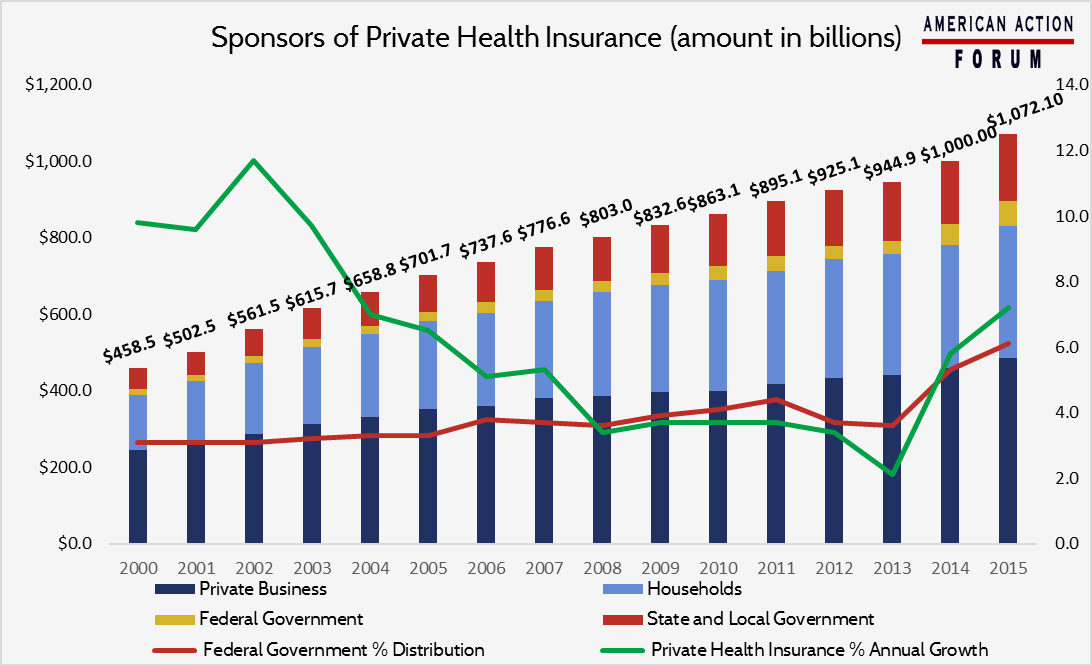Weekly Checkup
January 12, 2017
Who is Paying for Private Health Insurance?
Private health insurance is the largest payer of health care in the United States. In 2015, private health insurance accounted for 33 percent of all health care spending. It is sponsored by both individual households, private business and the federal, state and local governments. Private businesses and the government contribute to employer-sponsored private insurance premiums. Spending on private health insurance has increased every year before and after the passage of the Affordable Care Act (ACA). In 2009, before the passage of the law, $832.6 billion was spent on private health insurance. By 2015, it had risen to $1.1 trillion. Annual growth accelerated in 2014 and 2015, after the individual market began enrolling consumers. Annual growth surged from 2.1 percent in 2013 to 5.8 percent in 2014 and increased to 7.2 percent in 2015. The federal government’s role in private health care spending is also increasing. When looking at the percent distribution of federal government expenditure in the private insurance market, trends from 2000 on show that federal government spending remained below 4 percent until 2009 when the ACA was passed. Spending increased in 2014 when subsidies on the individual market were added to government costs. The amount spent by the federal government on private health insurance will continue to increase in 2016 and 2017 as 82 percent of enrollees on the individual market are subsidized, and the federal government will pay the majority of the premium increases for consumers.











